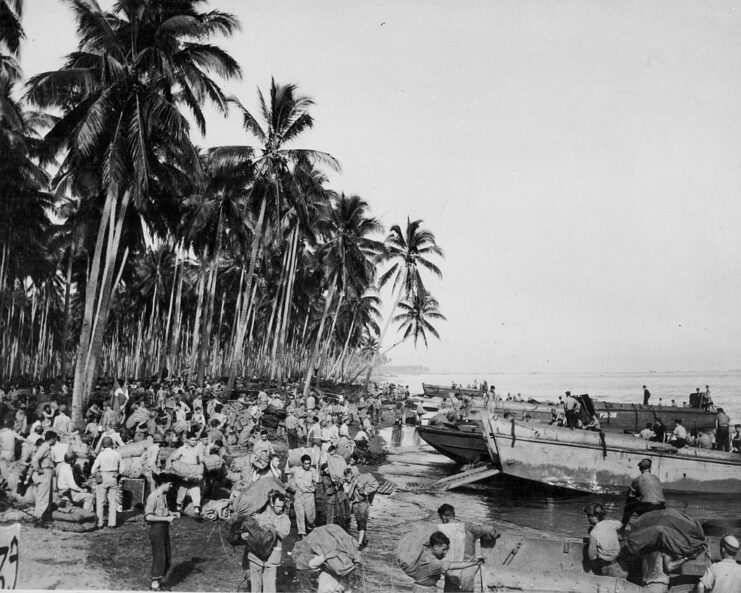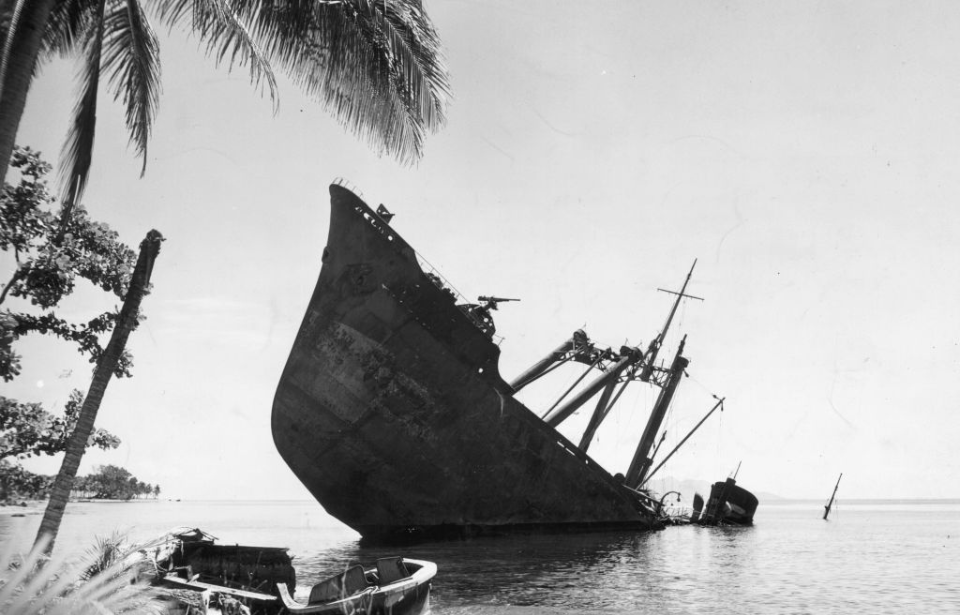Above is a photo of an unidentified Japanese ship that the Americans sank during the Guadalcanal Campaign. The vessel was sunk sometime during the fighting in 1942-43, and serves as a visual symbol of one of the most crucial engagements to have occurred in the Pacific Theater. With the Allies’ success, it marked a significant turning point in World War II.
Guadalcanal, in the Solomon Islands, was strategic for the Japanese, who’d occupied it to disrupt Allied communication and supply lines to Australia. The fight for control became a brutal struggle that tested the resolve and military capabilities of both sides.
The Guadalcanal Campaign began on August 7, 1942, when US Marines landed ashore, where they were immediately met with fierce Japanese resistance. The enemy troops were determined to hold their ground, despite being drastically outnumbered. The terrain and harsh weather conditions further complicated the fighting.
Over the coming months, both sides suffered heavy casualties: 7,100 dead for the United States and 8,500 combat deaths for the Japanese. The overall number of Japanese deaths was a staggering 19,200.
The campaign became a desperate struggle, with each side trying to gain the upper hand. The naval component of the fighting was equally as intense, with several major engagements fought in the waters surrounding Guadalcanal. Similar to the land battle, both sides sustained heavy losses, just this time to their equipment: the Americans lost 29 ships, while the Japanese lost 38.

Things finally turned in the Allies’ favor in November 1942 with the Naval Battle of Guadalcanal, a major Japanese offensive to retake Henderson Airfield, which they lost early in the fighting.
Allied ground troops, supported by naval and air power, successfully repelled the Japanese. By February 1943, the enemy forces had withdrawn their remaining troops, leaving the island in Allied control. As this was the first major land assault against the Japanese, it was also their first sizeable defeat, boosting Allied morale following the devastation of Pearl Harbor.
More from us: Desmond Doss Was the Only Conscientious Objector to Receive the Medal of Honor in World War II
The fighting exacted a heavy toll on both sides. However, the significance of the victory for the Allies cannot be overstated. The Guadalcanal Campaign was a turning point in the Pacific, shattering the myth of Japanese invincibility. More importantly, it allowed the Allies to gain a foothold in the Solomon Islands and establish a base for future offensives.
